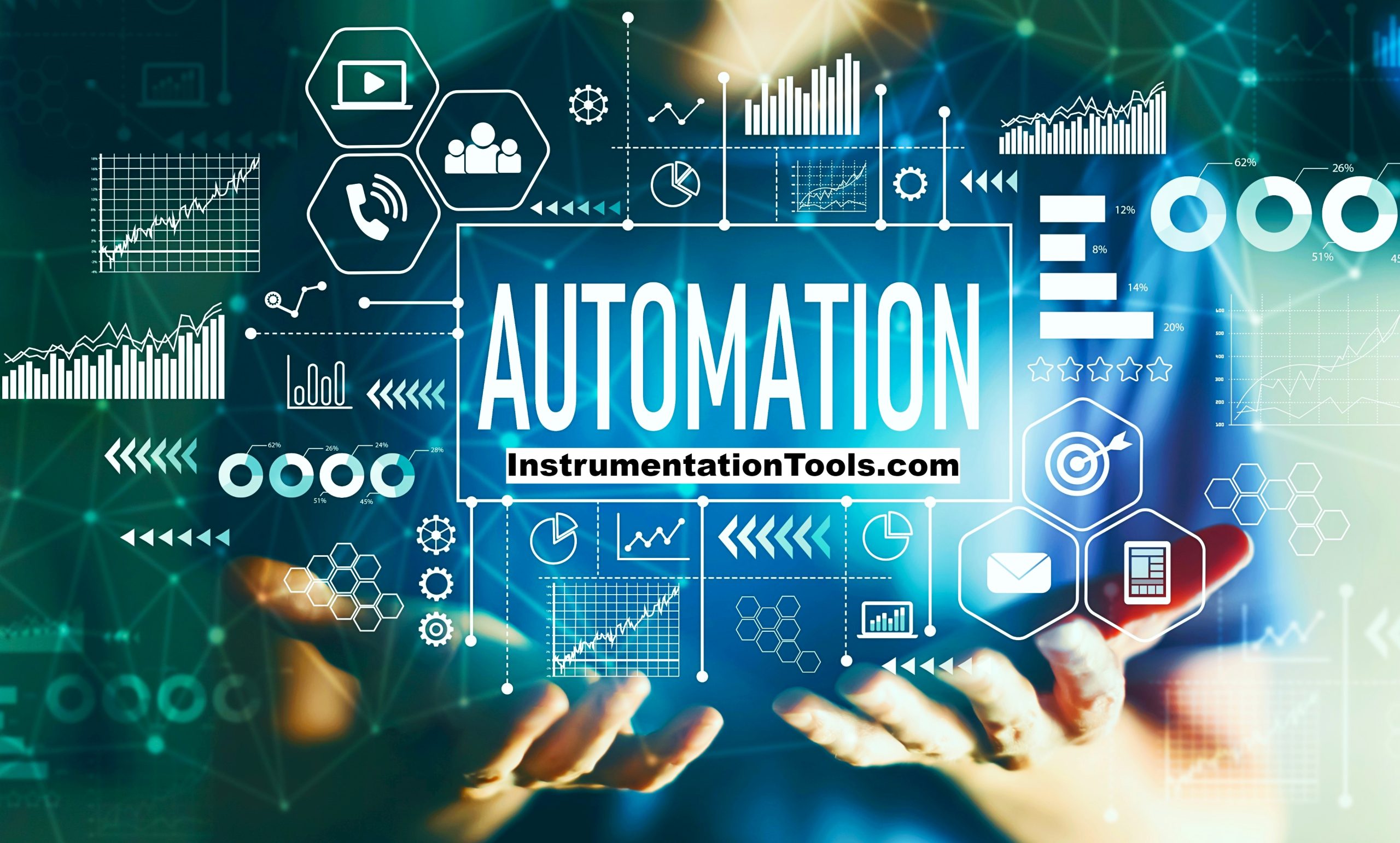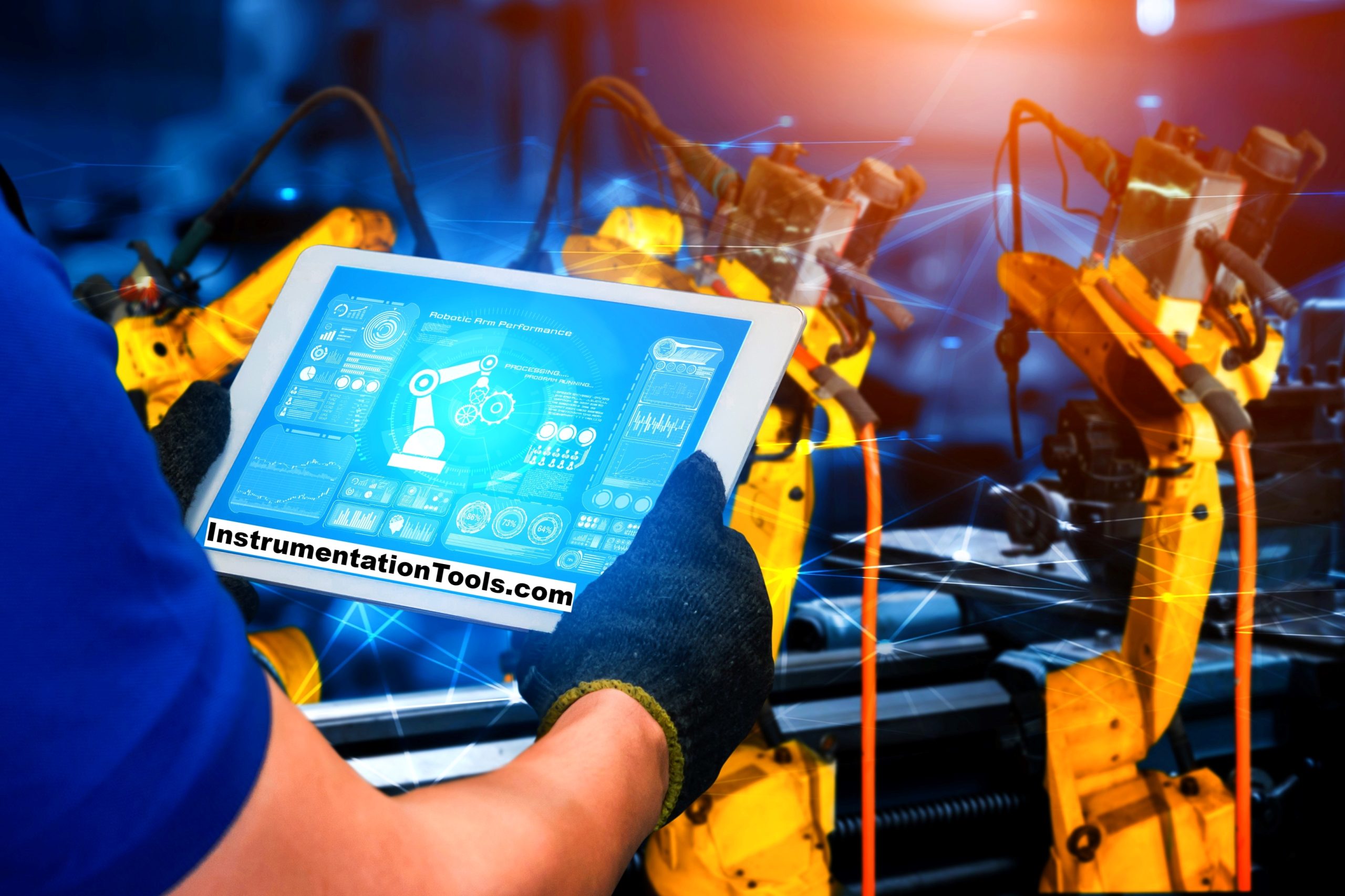Nowadays, as compared to standard manual processes in industrial manufacturing and production, automation is gaining a very vast popularity. Instead of employing a huge number of personnel to perform a task, the same thing can be done by an automated thing like robots, PLC, or other types of controllers. This helps increase productivity, and efficiency, reducing bugs and ensuring the safety of workers.
But, every process has its own merits and demerits; so it is not necessary that industrial automation only has its share of advantages. In this post, we will the advantages and disadvantages of industrial automation.
What is Industrial Automation?

Industrial automation is a process by which all the tasks in an industry are done automatically without the need for any humans (or with very less manpower). For example, suppose a machine is installed in the factory, where the operator has to first press the start button, then wait for some time and press the other button, then wait for some time and press the other button, and then finally wait again for some time and press the stop button.
Here, you can see that all the interlocks are carried further by the operator himself. Any lag or delay in it can hamper the whole process. So, instead, you just install a PLC in the system and write a logic where the user has to just press the start button initially.
Then, the logic will automatically go to the next process after a delay and then to the next process after a delay. There is no need for the user to press any button. All the interlocks will be done automatically. This reduces manual errors and increases efficiency and reliability. Also, the production time is increased to a great extent.
Advantages of Industrial Automation
Below are the advantages of industrial automation.
- High production rates
- High product quality
- Less man hours of working
- Consistency in performance
High production rates – Due to less intervention of personnel in it, lag time is decreased to a great extent and this increases production rates because you do not need to bother or interfere in between. All the logic will be done automatically and this reduces lag time, thus increasing production. With this increase in productivity, companies are able to focus on more important tasks such as innovation while still completing projects on time. These projects create value for the company and set them up for further success.
High product quality – Because processors can be written with several types of logic in them, you get options to add multiple interlocks with safety. Also, due to advanced access and reporting features in SCADA, you get minute details of each and every minute of the activity done. This ensures that the product manufactured is of very good quality.
Less man hours of working – If there was no PLC, the operator would have to wait for hours to manually check in front of the machine and complete the task. In the case of PLC, all the activity is done automatically and there is no need for the operator to check manually and wait for the process to get over. The activities will be recorded in PLC and the PLC also will complete the task in time. So, man-hours are reduced to a great extent. This not only benefits the manufacturing output of a factory but also the quality and efficiency of a product.
Consistency in performance – The machine is performing the same task repeatedly and there is no looking back on it. There is no need for operators to get exhausted or no need for manual intervention. The same product is being manufactured at the same pace. This means the business is performing consistently and with increased efficiency.
Disadvantages of Industrial Automation
The main disadvantages of industrial automation are mentioned below.
- Employment issues
- High initial investment
- Over-dependency on technology
- Loss of skills
Employment issues – Because machines are replacing humans in factories, they tend to lose jobs due to this. The business thinks that there is no need for personnel, but in reality, they matter because machines cannot be entirely dependent upon them. Someone is required just to overlook them for some time and not completely ignore them. This can lead to economic and social challenges, including income inequality and unemployment rates.
High initial investment – As the automated machineries are expensive to operate, they are equally expensive to set up. And if the setup fails, then huge losses are incurred for the business. Initial investment involves expenses such as purchasing equipment, and software, training employees, and restructuring processes. Due to all this, the first capital investment is very high in industrial automation.
Over-dependency on technology – Because automation purely relies on technology, it is not guaranteed it is completely safe. Issues like cybersecurity vulnerabilities, hardware failures, logic bugs, or networking breakdowns can completely hamper the process. And this is even highly time-consuming to replace, considering the technology involved. This produces a very high-risk operation.
Loss of skills – As human depends on machinery, he tends to become lazy and tries to ignore things, thinking that the machine is present to do things. This starts to increase the loss of skills in workers, and it can reduce the productivity of the business. Because the labor becomes unskilled, proficiency is reduced and operation becomes difficult.
Industrial Automation Pros and Cons

Understanding the advantages and disadvantages of industrial automation is critical in the engineering field. Let’s learn some brief details in the below table.
| S.No. | Aspect | Advantages of Industrial Automation | Disadvantages of Industrial Automation |
|---|---|---|---|
| 1 | Efficiency | Greater efficiency through higher speed and more precise control of processes. | Initial setup is highly complex and demands detailed planning and programming. |
| 2 | Labor Cost | Reduces labor costs by automating repetitive and mundane tasks. | Loss of jobs for human workers, contributing to unemployment. |
| 3 | Quality | Consistent quality due to automated controls and less reliance on human judgment. | Systems can be prone to mechanical failures or software glitches, requiring an emergency shutdown or human intervention. |
| 4 | Safety | Improved worker safety by automating dangerous tasks and minimizing human interaction with hazardous environments. | Malfunctions in automated systems can be catastrophic and could compromise safety if not properly managed. |
| 5 | Scalability | Easy to scale operations up or down based on demand due to the modular nature of automated systems. | High initial costs make scaling down operations expensive and less flexible. |
| 6 | Energy Efficiency | Potential for higher energy efficiency due to optimized operations. | Sophisticated automation systems can have high power requirements, especially in data processing centers. |
| 7 | Data Analytics | Advanced data collection and analytics capabilities for process optimization. | Over-reliance on data analytics can lead to overlooking practical, human-centered considerations. |
| 8 | Resource Utilization | Better utilization of materials, reducing waste. | Increased electronic waste due to the short lifecycle of some automation components. |
| 9 | Flexibility | Greater flexibility in switching between different tasks or products. | Adaptability issues when trying to retrofit older systems or integrate with legacy systems. |
| 10 | Reliability | Generally high reliability due to less human error. | Complexity of systems can make troubleshooting and maintenance challenging. |
| 11 | Global Competitiveness | Automation often leads to increased global competitiveness due to reduced production costs and increased quality. | May contribute to a global “race to the bottom” where companies continually look for cheaper automation solutions, potentially compromising quality and ethical considerations. |
| 12 | Human Skill Requirements | Reduced requirements for manual skills and labor. | Increased need for specialized skills for system setup, maintenance, and troubleshooting, which may require extensive training. |
| 13 | Operational Flexibility | Ability to operate continuously, even in harsh or varying conditions, increasing operational hours. | Dependency on various external factors like a steady power supply and network connectivity. |
| 14 | Inventory Management | Improved inventory management through real-time tracking and analytics. | Complexity in integrating automated inventory systems with existing or legacy systems can be a challenge. |
| 15 | Environmental Impact | Potential for reduced environmental impact through optimized energy use and reduced waste. | Increased electronic and mechanical waste due to the disposal of obsolete automation systems and components. |
Selecting an appropriate level of automation involves weighing these advantages and disadvantages, often requiring a multi-disciplinary approach that considers not just the technological aspects but also the social, economic, and ethical implications
In this way, we saw the advantages and disadvantages of industrial automation.
If you liked this article, then please subscribe to our YouTube Channel for Instrumentation, Electrical, PLC, and SCADA video tutorials.
You can also follow us on Facebook and Twitter to receive daily updates.
Read Next:
- Induction Motor PLC Program
- Offline and Online UPS Systems
- What are Data Acquisition Components?
- Comparison of PNP and NPN Sensors
- Introduction to Control System